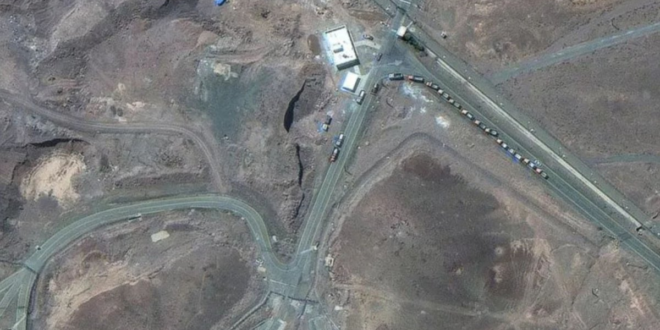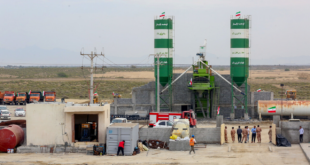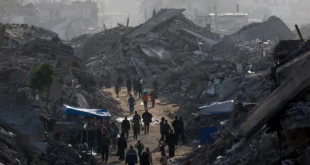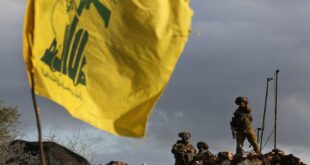In the days before U.S. airstrikes hit Iran’s Fordow and Isfahan nuclear sites, satellite images captured convoys of cargo trucks leaving the facilities. Nuclear experts now believe Iran relocated more than 400 kilograms of highly enriched uranium—enough for 10 nuclear weapons—to a secret location, a move that has left U.S. and international inspectors unable to verify the material’s whereabouts.
A classified U.S. intelligence report reviewed after the strikes found Iran’s nuclear program was set back only by several months, contradicting President Donald Trump’s assertion that the program had been “completely and totally obliterated.” Israeli intelligence reports have also contradicted the initial U.S. assessment, estimating more “significant” damage has been done by the bombing.
The centrifuges at Fordo, the main enrichment facility buried deep inside a mountain that was targeted last weekend, are “no longer operational,” according to the International Atomic Energy Agency (IAEA).
Who Confirms the Uranium Is Missing—and Who Denies It?
Rafael Grossi, director general of the IAEA, confirmed his team last verified Iran’s uranium stockpile on June 13. Since then, he said, “We do not have information of the whereabouts of this material,” in an interview with Fox News. Grossi added on CNN: “Iran has made no secret that they have protected this material.”
Vice President JD Vance acknowledged the uncertainty, telling ABC News: “We’re going to work in the coming weeks to ensure that we do something with that fuel.”
Vance did not confirm whether the United States knows where it is now.
The 60 percent enriched uranium—technically just short of weapons-grade—would be enough to produce multiple nuclear warheads if further refined. As of May, the IAEA reported Iran possessed 408.6 kilograms of the material.
The White House said Thursday there is no indication that Iran removed any enriched uranium before the U.S. strikes on its nuclear facilities.
“There is no indication that any enriched uranium was removed from any of the three sites in Iran targeted by the U.S.,” White House Press Secretary Karoline Leavitt told reporters.
What Do Satellite Images Reveal About Iran’s Nuclear Movements?
Maxar Technologies confirmed it captured satellite images on June 19 and 20 showing at least 16 cargo trucks positioned outside the Fordo Fuel Enrichment Facility. The images, taken just days before the U.S. launched “Operation Midnight Hammer,” revealed what defense analysts described as a likely “frantic effort” to remove sensitive nuclear material or equipment.
According to The New York Times, two Israeli officials said Iran likely removed 400 kilograms of 60 percent enriched uranium in the days leading up to the U.S. attacks. A senior Iranian source told Reuters that “almost all” of Iran’s highly enriched uranium had been transferred to a secret location.
What Is the Pentagon Saying?
In a Pentagon briefing Thursday, Defense Secretary Pete Hegseth and Gen. Dan Caine defended the strike operation and attempted to shift focus away from whether Iran’s uranium had been moved. Hegseth labeled the strikes “an historically successful attack,” and challenged critics for “breathlessly” focusing on early intelligence assessments suggesting only partial destruction.
“You want to call it destroyed, you want to call it defeated, you want to call it obliterated — choose your word,” Hegseth told reporters. “This was an historically successful attack.”
General Caine said the operation resulted from 15 years of classified research to defeat Iran’s underground enrichment complex. “We were quietly and in a secret way the biggest users of supercomputer hours within the United States,” he said, referring to the Defense Threat Reduction Agency’s simulations.
Asked directly if uranium was moved, Hegseth responded, “I’m not aware of any intelligence that says things were not where they were supposed to be.”
Still, the Defense Intelligence Agency’s early assessment—leaked prior to the briefing—found the strikes had caused “significant” damage but stopped short of declaring Iran’s nuclear program destroyed. According to the Associated Press, DIA officials expressed “low confidence” in determining whether all nuclear materials had remained in place.
Where Could 400 Kilograms of Uranium Have Gone?
To move 400 kilograms—roughly 880 pounds—of enriched uranium hexafluoride (UF₆), Iran would need just a single 30B Type B(U) transport cylinder.
These specialized cylinders are approximately 4 to 4.3 feet tall and 3 to 3.9 feet in diameter, and when filled, weigh close to 6,070 pounds. Each is capable of holding up to 1,534 kilograms (about 3,380 pounds) of uranium, making one cylinder more than sufficient to store the entire 400 kg quantity.
These cylinders are designed to lie flat during transport, typically secured in reinforced cradles on industrial or military-grade flatbeds. For visual reference, a Ford F-150—one of the most widely used work vehicles in the U.S.—has a payload capacity of approximately 3,300 pounds, just enough to carry one filled cylinder safely.
Why Can’t Inspectors Verify the Stockpile Anymore?
The IAEA has not resumed inspections since the June 22 strikes, with Iran suspending international access amid ongoing military tensions. “Continued military escalation delays this indispensable work,” Grossi warned the UN Security Council, urging diplomatic re-engagement.
Iran’s Deputy Foreign Minister Takht Ravanchi dismissed speculation that Tehran would scale back its nuclear ambitions. “No one can tell us what we should and should not do,” he said in remarks reported by Iranian media.
Ali Shamkhani, a senior adviser to Supreme Leader Ali Khamenei, was more blunt: “Even assuming the complete destruction of the sites, the game is not over, because enriched materials, indigenous knowledge, and political will remain intact,” he told The Telegraph.
 Eurasia Press & News
Eurasia Press & News




